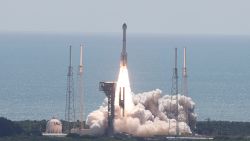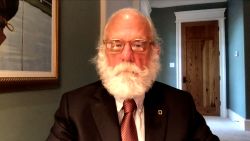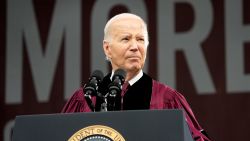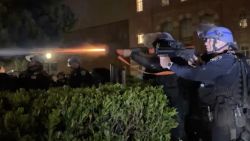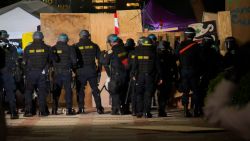It was a moment the aviation world had been waiting for since a second deadly crash grounded the 737 MAX fleet: Boeing gathered hundreds of pilots, airline executives, and regulators to unveil a fix that would return the jetliner to the sky.
“Every time something happens … we learn from it,” a senior Boeing official told reporters, reflecting on lessons from the Lion Air and Ethiopian Airlines crashes, less than five months apart, that had killed nearly 350 people. “There are one-off occurrences that happen – accidents like we’ve just experienced.”
In the week-plus since that announcement, it has become increasingly clear that the two accidents were not unfortunate “one-off occurrences,” the software change Boeing touted would not be enough, and the industry is facing a serious test of its mettle. The challenges of crafting deeper, more expensive fixes, addressing structural deficiencies in the certification process, and reassuring shaken fliers around the world have become more apparent.
Boeing has said that its software change needs additional weeks of work, and has seemed to accept some responsibility for designing a system in need of improvement.
Fueled in part by damning preliminary reports that show how starkly similar the two crashes were, the moment of reckoning is challenging corporations, regulators, and investigators to take a critical look at the design and inspection of aircraft, and question whether decisions and long-standing methods – employed for practical reasons – put the flying public at risk.
“It’s our responsibility to eliminate this risk,” Boeing CEO Dennis Muilenburg said on Thursday. “We own it and we know how to do it.”
His comments in a Boeing video followed the Ethiopian government’s preliminary report describing the pilots of Ethiopian Airlines Flight 302 struggling on the morning of March 10 to control their 737 MAX 8 during the six-minute ill-fated flight. According to Ethiopian crash investigators, the pilots correctly followed procedures publicized after the Lion Air accident in October to disable a faulty computerized stabilization system that Boeing created to prevent planes from crashing, but the plane’s speed and the clock worked against their efforts.
Peter Goelz, a former managing director of the National Transportation Safety Board (NTSB) and a CNN aviation analyst, said he sees evidence Boeing is now no longer primarily focused on returning the MAX to the skies, but is working on regaining public trust in its latest, most fuel-efficient version of the workhorse jet that airlines had been lining up to buy.
“I think clearly it has got through to Boeing,” Goelz said.
The Ethiopian report contained two recommendations: First, that Boeing develop a remedy, and second, a call that regulators scrutinize the fix “before the release of the aircraft to operations.”
Questions of trust lay with the Federal Aviation Administration, which has faced concerns from lawmakers of excessive coziness with Boeing. Due to the company’s broad aerospace portfolio, the federal government is both the regulator of Boeing and hires it for sensitive military contracts and complicated space operations. The world’s most famous aircraft, Air Force One, is, after all, a Boeing jet.
The FAA, created with the dual mission of regulating and promoting the aviation industry, has defended its decision to keep the 737 MAX flying while other aviation authorities around the world ordered it grounded. Acting Administrator Daniel Elwell bristled when members of Congress asked him why other countries had acted sooner by proactively pulling it from service. Elwell defended the US and Canadian authorities as awaiting evidence, calling them “the first countries to ground the aircraft with data.”
The FAA’s decisions have “shaken” confidence in the FAA, the “gold standard for aviation safety,” said Transportation Department Inspector General Calvin Scovel.
While Ethiopian and Indonesian investigators continue to probe the circumstances of those crashes, multiple investigations in the United States are casting a wide net.
A long-standing practice that has allowed both plane- and part-makers to certify their own work as meeting airworthiness standards is coming under scrutiny.
House Transportation Committee Chairman Peter DeFazio said he has “many serious questions surrounding the Boeing 737 MAX and the FAA’s certification process.” He said the inspector general has opened a probe, and a special DOT advisory committee will review “the procedures … for the certification of new aircraft.” Prosecutors with the Justice Department have subpoenaed documents, including from former Boeing employees. The FAA has formed its own international review into “the 737 MAX automated flight control system.”
For all the reviews, some are wondering what will change.
When the public’s attention moves on, the FAA will still be left with a mandate to delegate some certification decisions to the manufacturers, former FAA chief of staff Michael Goldfarb told CNN.
It’s one thing, he said, for Congress to criticize the system it put into law, but another for it to fund enough FAA inspectors to oversee manufacturer decisions.
“It’s been hard for the agency (FAA) to keep pace with pay” in private industry, Goldfarb said.
The NTSB, with power to recommend safety changes but not require them, is reviewing the organizational delegation authority, Chairman Robert Sumwalt said Friday.
“We would not really be doing our job if we weren’t making sure that those aspects were being looked at,” Sumwalt said. He said the board has the power to make conclusions separate from the Ethiopian and Indonesian investigations, of which it is a part.
Goldfarb said the FAA and its worldwide counterparts would be smart to assemble for a “regulatory summit” to evaluate the 737 MAX before it returns to service. Confidence in the agency has been hurt since its delayed decision to ground the MAX, he said.
Goelz, the former NTSB leader, sees signs – in Boeing’s latest comments and the decision to put more work into the software change – that Boeing and FAA are moving in the right direction.
“I think the top priority is to make sure that this aircraft is 100% safe, secondly to make sure that the pilots who fly it have the information and the skills to fly it safely even in difficult situations,” Goelz said. “Then thirdly to convince the public – prove to the public that they’ve done everything in their power to make this safe again.”
Convincing the flying public may be the most difficult task of all. Among the defenders of the MAX were the pilots who flew them – who, in some cases, reacted to the Ethiopian report by calling for additional review of what went wrong.
“In the wake of the tragic loss of Ethiopian Airlines Flight 302 on Sunday, people around the world are jumping to conclusions about the Boeing 737 Max,” the Allied Pilots Association, which represents pilots of American Airlines, said on Thursday afternoon. “Federal and international authorities have just begun to look into Sunday’s accident. It is too early to determine possible causes.”
And then there’s those who sit behind the pilots.
In the weeks ahead, travelers will need to decide if they are comfortable walking onto a 737 MAX, buckling up, and taking off.



